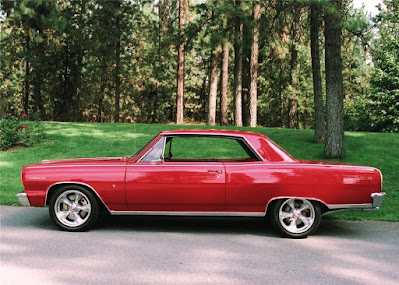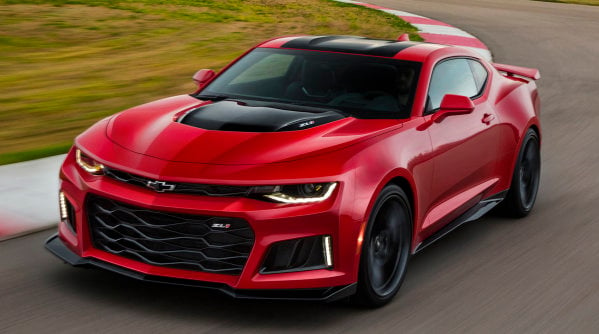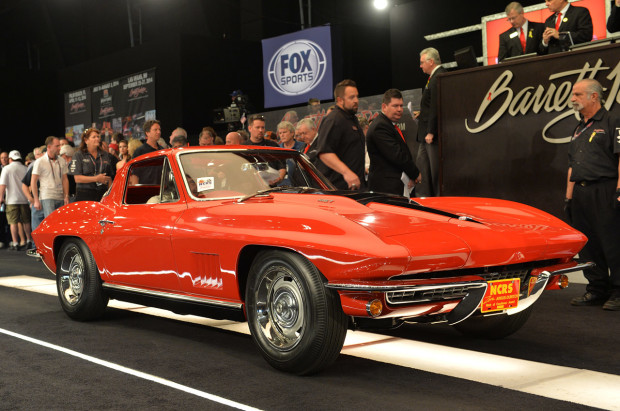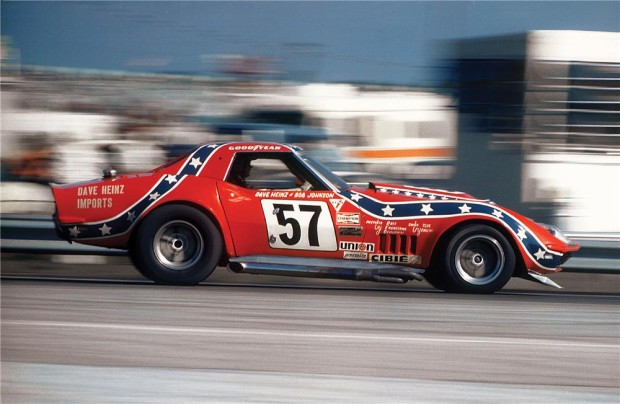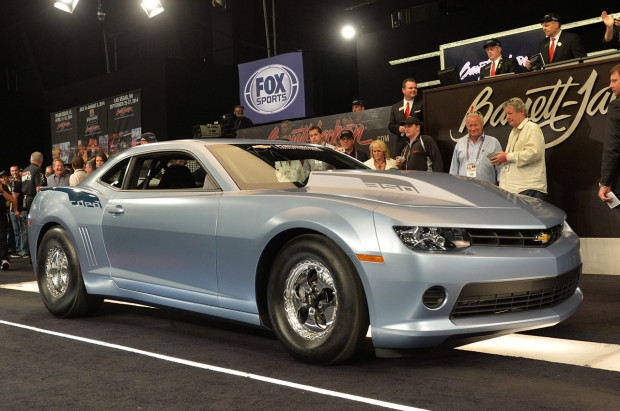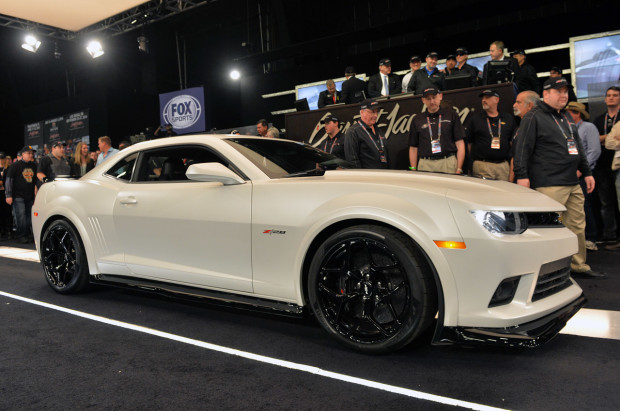Chevrolet Chevelle the Legend
The Chevelle was one of the few muscle cars that Chevrolet put into production between 1964 and 1973. Outside of the '73 Chevelle, the muscle car enjoyed some great success through its strong run and continues to be celebrated by all kinds of car enthusiasts. From drag strips to car shows and car auctions, you'd be hard-pressed to go to any car event and not see a few awesome-looking examples.Most Chevelles hold their value very well because they look great stock and when customized, and they are a very important part of the Muscle Car era. Read on to learn a little more about the Chevelle and how it etched its name in muscle car history.
In 1963, when the Chevelle made its way into production for the first time as a '64, there were a of couple different motors to choose from. The largest and the most powerful of them all was a 300 horsepower 327 cubic inch small block. This really didn't hit the nail on the head for consumers, as it was a little underpowered for the power-to-weight ratio.
Minor Change In Style
The 1966 Chevelle would see some body modification, and although the power rating stayed the same, times at the track would be cut from a 14.66 down to a 14.40 quarter-mile time. This was due to a solid lifter cam and bigger valves given to the 396 cubic inch motor.
More Changes For '67
In 1967, Chevrolet would stick with the same body style for the muscle car but would make some performance changes.
Front-wheel disc brakes were factory installed to help stop the wider tires and new 14-inch rims. A new reworked bumper and blacked-out rear panel were also part of the new features the '67 had to offer.
Unfortunately, because of GM curb weight standards, it would experience less power and slower times at the track. The biggest engine offered was the L34 396, which only produces 350 horsepower and did 0-60 mph in 6.5 seconds with a quarter-mile time of 15.3 @ 94mph.
1968-1969 Chevelle
For 1968, Chevrolet would try something new with the Chevelle. A new body style would make its way off the production lines. This new look brought about a shorter wheelbase, a longer front end, and a shorten rear-deck lid, giving it a fastback look. Although the 1968 Chevelle got a new look, it received the same power sources as the previous year.
The Chevelle's suspension would still be a sore spot with lots of body roll—and slow shifting from the Muncie four-speed left a lot of complaints from consumers. But the one thing that did change was the consumer's choice of rear gears. The axle ratios ranged from 2.73:1 to a dealer-installed 4.88:1 drag Cogs gear ratio.
Upping The '69's Power Output
With consumers still having complaints about power, Chevrolet would up the ante again for the '69 Chevelle. Although the badges and the build sheets would say the Chevelle was built with a 396 cubic-inch motor that produced 375 horsepower, it was well known that the motors were bored out to 402 cubic inches. The deceit was mainly to meet emissions standards and to gain a horsepower edge. This plan really paved the way for what was to come in 1970.
1970 Chevelle
In 1970, Chevelle would see the most sufficient changes toward being a major contender in the muscle car world. Cosmetic changes included the first functioning cowl induction hood with racing hood pins. A newly styled front-end would be implicated, along with some new style rally five-spoke wheels.
But the biggest change came in the size of the motor. General Motors lifted the band against producing any motors over 400 cubic inches, giving Chevrolet the green light to build and produce a Chevelle with what would become one of the most popular motors ever made, the LS6 454. Along with the functioning cowl induction hood and the huge displacement, also brought about better-performing engine components that helped produce 450 horsepower and left plenty of room for upgrades.
1971-1972 Chevelle
Unfortunately, for 1971-72, the Chevelle would see some extremely harsh decreases in power. In response to GM's new rules that all engines must run on unleaded fuel and meet every EPA restrictive emission standard, the muscle car era was starting to become a thing of the past. There was one good thing about the years of '71-'72—although the big 454 motor's power was lowered due to EPA emissions standards, you could still order them, and if you knew what you were doing, upgrading them to make the power a 1970 455 did was not a huge task.
The 1973 Chevelle No Longer Looked Like A Chevelle
For the last year of the Chevelle's existence, it got a completely new body style and the motors had even less power. These cars would be the least liked among the 9-year production run, and even to this day are not a big hit at drag strips, car shows, or auctions.
1969 COPO Chevelle
In 1969, Chevrolet offered one of the rarest Chevelles to date, the '69 COPO. The COPO was designed specifically for the drag strip. It came with a 427 cubic-inch powerplant that produced an underrated 425 horsepower and was capable of producing quarter-mile times of 13.3 @ 108mph. The COPO Chevelle was undoubtedly the fastest production Chevelle that Chevrolet ever produced. Like the other Chevrolet COPO Muscle Cars, this Chevelle has a cult following and draws big crowds and big numbers at auctions.
The Reasons for Chevelle's Popularity
What makes the Chevelle so popular among consumers and muscle car fans?
The price, the size, the style, and the power. As a mid-size car, you could put your whole family in one and head to the grocery store, go shopping, come home, drop the family and the grocery off, and then head to the drag strip for some race time.
Saying Good-Bye to the Chevelle and Many Other Muscle Cars
Although the Chevelle was canceled after 1973, it was not the only muscle car that got the ax. The GTO, Oldsmobile 422, the Plymouth Roadrunner, and many other muscle cars would see the same fate right around the same era due to the pursuit to find more fuel-efficient and economy-friendly cars. But the Chevelle and all of its Muscle Car brothers and sisters, still to this day are extremely popular among car enthusiasts.

